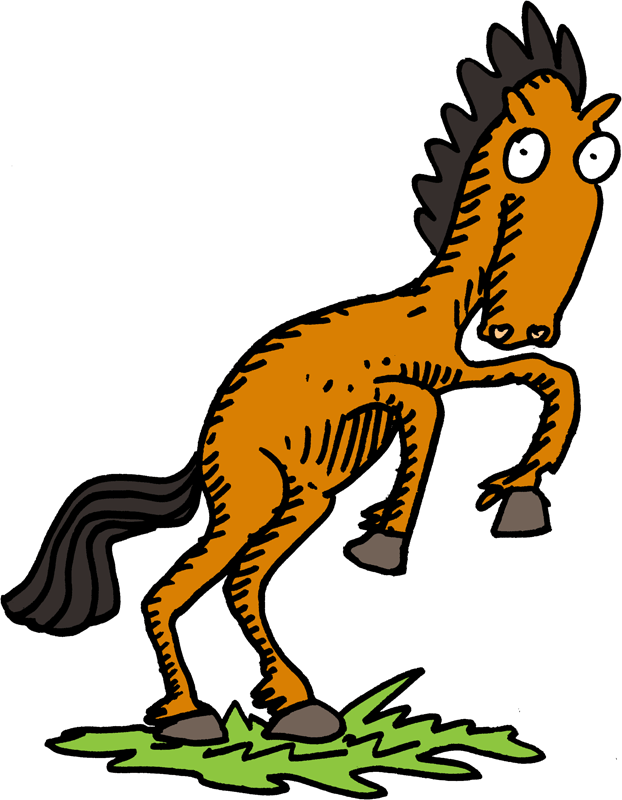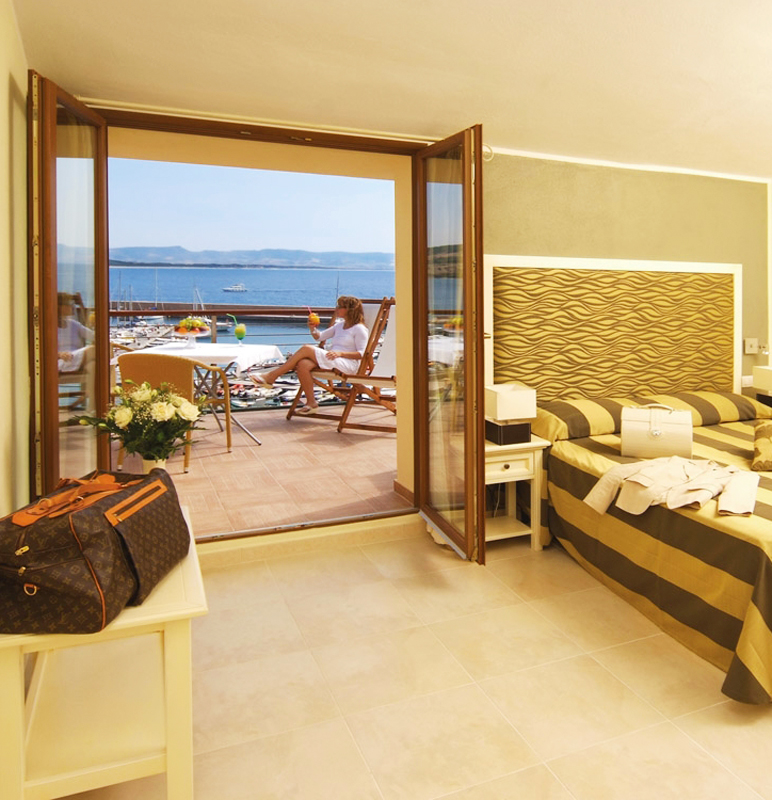At the heart of the Mediterranean, Sardinia has been visited by
most of the players in the power struggles of the past – Phoenicians, Carthaginians,
Romans, Spaniards, even Admiral Nelson – and they have left behind a rich legacy.
But it is not all history: Sardinia has some of the best beaches to be found
anywhere, with fine sand and clear water.
< Sardinia
1. Alghero
2. Bosa
3. Castelsardo
4. The Maddalena Islands
5. Cala Gonone
6. Cagliari
7. Su Nuraxi
8. Villasimius
9. Sant’Antioco and San Pietro
10. Sinis Peninsula
< Sardinia
1. Alghero
Medieval port with a Spanish past

Streetlamp in the old town
Alghero is an ideal place for families, with myriad
attractions from sea caves and beaches to ancient nuraghe buildings.
Sardinia’s oldest resort, the town has a huge range of places to stay and a
tempting choice of eateries. In the largely traffic-free old town, the
labyrinthine lanes are lined with tiny shops and cafés, and fishing boats
are moored alongside glamorous yachts in the port – a reminder of when a
mighty Spanish fleet docked here en route to flush out Algerian pirates in
1541.

Key Sights
1. Beaches The best beaches are Le
Bombarde and Lazzaretto, around 8 km (5 miles) northwest of town.
Rent bikes from Cicloexpress by the port to get there.
2. Nuraghe di Palmavera The ruins of this
ancient palace 10 km (6 miles) northwest of town are surrounded by
50 circular huts and date from the 13th and 14th centuries BC.
3. Sella e Mosca Winery Tour the vineyards
that grow the island’s Cannonau grape at this winery, 11 km (7
miles) north of town. There is also a wine museum.
4. Grotta di Nettuno A deep cave gouged
out of sheer cliffs west along the coast at Capo Caccia, Neptune’s
Grotto is accessible by boat from the port. Marvel at stalagmites
resembling castles.
5. Aquarium Get face-to-face with exotic
creatures of the deep, including huge sharks, turtles, piranhas and
eels.
6. Old Town Tour the old town’s narrow
maze of lanes on the Trenino Catalano mini-train, from the port in
summer.
7. The port Overlooked by the old city
walls, the port is a hive of activity, where boat-tour operators
offer trips along the coast to beaches.
8. City walls Alghero is enclosed within
stout walls, which can be walked along, studded with seven
watchtowers from the Spanish era.

Left Old Town Middle The
port Right City walls
Kids’ Corner
Do you know?
-
How old is the Nuraghe di Palmavera?
-
What is the name of the grape variety
grown around Alghero?
-
Where might you see stalagmites and
stalactites?
-
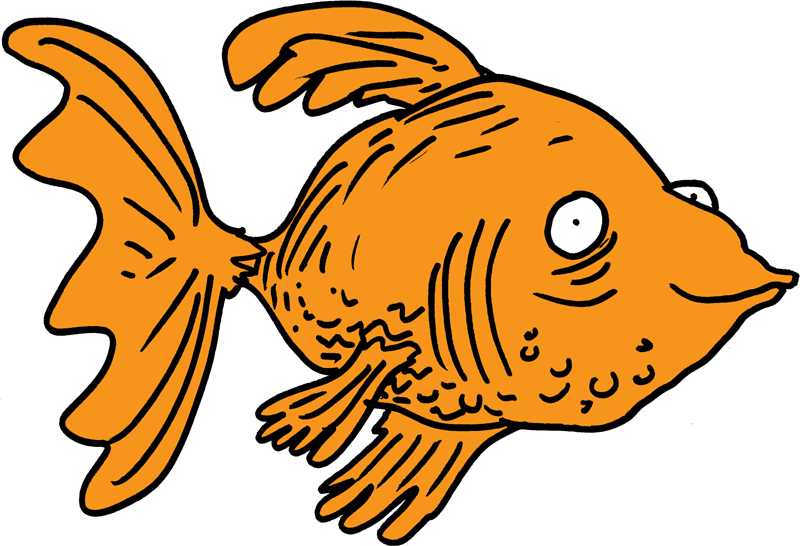
Which is the biggest fish in the
Aquarium?
-
How many watchtowers can you count in
the old town?
Little Barcelona
The Spanish occupied Sardinia for some 400 years
from 1353 until the 18th century. Alghero became known as
Barceloneta (little Barcelona) after the city in Northern Spain
where the Spanish settlers came from, and Catalan – the language of
that region – is still widely spoken. Look for it on street signs.
Hive dwellers
The Nuraghic people of Sardinia held sway from the
18th to the 2nd century BC – the Bronze Age – but almost nothing is
known about them. They left behind thousands of mysterious
beehive-shaped stone buildings such as the impressive Nuraghe di
Palmavera, outside Alghero. No one knows if they were simply houses,
fortresses, temples, all of the above – or something completely
different. What do you think?
< Sardinia
2. Bosa
Hilltop castle lookout
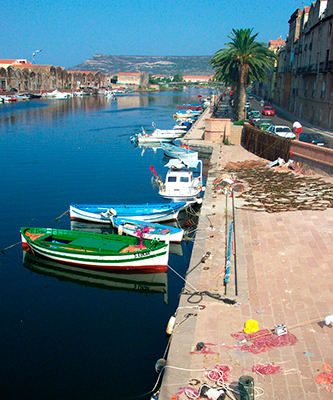
Take a stroll, or a row, down the River Temo in Bosa
Along a wild, rocky stretch of coastline, 45 km (29 miles)
south of Alghero, the town of Bosa sits a little way inland from the sea on the
River Temo. The medieval town, with steep, traffic-free lanes, climbs up to the
hilltop Malaspina Castle, which dates from the 12th
century and affords grand views over the valley. Bosa Marina, 3 km (2 miles)
downriver, has a first-class beach, overlooked by an old Spanish watchtower and
ringed with cafés and restaurants. A little further inland from Bosa stands the
solitary church of San Pietro, looking much as it
must have done when it was finished in 1073.
< Sardinia
3. Castelsardo
A mighty elephant and a majestic castle

The distinctive Roccia dell’Elefante near Castelsardo,
uncannily like an elephant
The Doria family of Genoa, a major contender in the medieval
power struggles to control Sardinia, established their base at this town on the
island’s northern coast. The 12th-century castle they
built on the town’s highest promontory still stands, commanding majestic views
of the coast, and today houses the Museo
dell’Intreccio, displaying the basketwork for which the town is famous.
A couple of ancient churches are nestled in the steep alleys below the castle,
while the road east of town leads to one of Sardinia’s iconic sights, the Roccia dell’Elefante, a wind-carved hunk of granite
with an astonishing resemblance to a gnarled elephant.
Kids’ Corner
Do you know?
-
Who were the Doria family and where
did they come from?
-
Which craft is associated with the
town of Castelsardo?
-

Where can you find a stone elephant in
Sardinia?
-
What is Garibaldi’s link with
Sardinia?
Look out for…
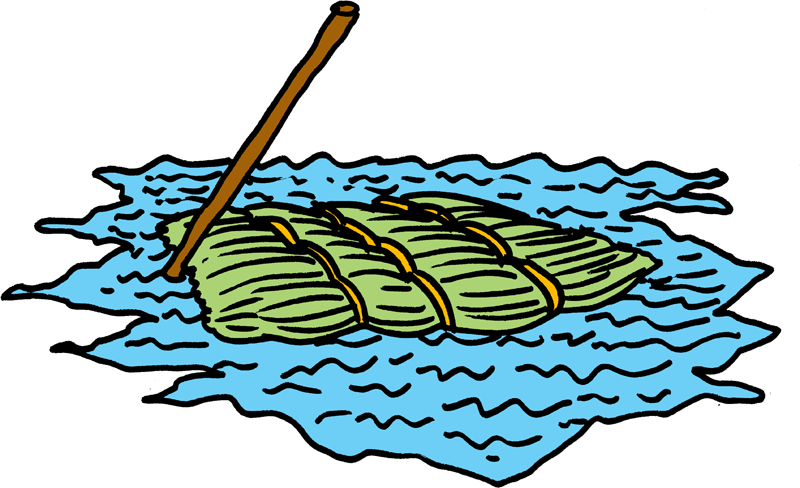
A raft woven out of grass in Castelsardo’s
museum of basketwork.
< Sardinia
4. The Maddalena Islands
Island-hopping

A view of the harbour at La Maddalena, on Isola Maddalena,
at dusk
Off Sardinia’s northeastern coast, the Arcipelago della
Maddalena includes some of Sardinia’s most idyllic spots. Reached by regular
ferry from the port of Palau, the main island, Isola
Maddalena, has the only town, La Maddalena. A causeway carries a road to
the neighbouring isle of Caprera, where the Italian
revolutionary hero Giuseppe Garibaldi (1807–82) lived for many years (his tomb
is here). A fascinating museum dedicated to his adventurous life, the Compendio Garibaldino, occupies his former home.
Boat tours are available to explore the smaller islands, Santo Stefano, Spargi,
Razzoli, Budelli and Santa Maria, all with secluded beaches.
Kids’ Corner
Garibaldi biscuits
Garibaldi biscuits, known to kids as “squashed
flies”, were based on the poor rations of the army and were first
made by British company Peak Freans in 1861.
Garibaldi’s redshirts
In 1860, Giuseppe Garibaldi, hero of the Italian
independence struggle, led an army of one thousand “redshirts” to
overthrow the Spanish in Sicily and Naples, in a campaign that led
to the Unification of Italy under King Vittorio Emanuele II.
The freedom-fighter spent his last years on the
island of Caprera, and is said to have asked for his deathbed to be
moved so he could gaze at “the emerald and sapphire sea”.
Look out for…
Garibaldi’s rough-hewn tomb on Caprera.
< Sardinia
5. Cala Gonone
Secret seaside hideaway
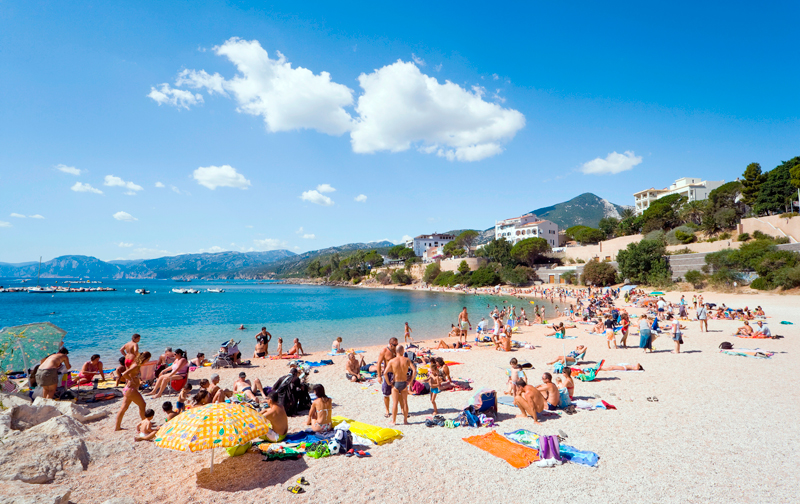
The sandy beach and turquoise waters of Cala Gonone
A steep, zigzagging road leads down a mountainside to Cala
Gonone, a seaside hideaway sheltering a cluster of restaurants and hotels, and a
choice of beaches. The best of these are reached by boat excursions from the
harbour or, for the energetic, along a rough path running along the base of the
cliffs. As well as the beaches, there are grottoes to explore, and opportunities
for diving and other watersports.
Kids’ Corner
Look out for…
-
The ruined prehistoric palace of
Nuraghe Mannu, off the road to Cala Gonone.
-
The wedding-cake rock, a boat-trip
from Cala Gonone.
< Sardinia
6. Cagliari
Sardinia’s walled capital city
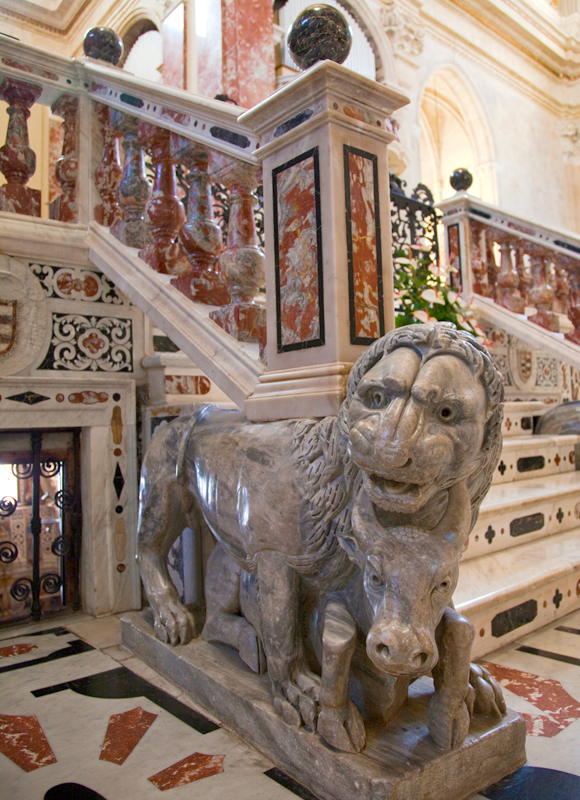
A 12th-century stone lion in the cathedral
Sardinia’s capital, Cagliari presents an impressive sight,
spreading up from the port to the old walled citadel on a hilltop. This
historic quarter is the best place to wander with a family, with largely
traffic-free streets and a glut of attractions. But the lower sections are
also fun, not least arcaded Via Roma opposite the port, enlivened by
pavement cafés, hawkers selling their wares and a steady parade of
passers-by. There are Roman remains, underground vaults and botanical
gardens too.

Key Sights
1. Museo Archeologico Nazionale Finds,
from bronze Nuraghic figures to Carthaginian masks and Roman coins,
are on display.
2. Orto Botanico The botanical gardens in
the heart of the city make a peaceful spot to unwind among exotic
plants and trees.
3. Bastione San Remy This wide open space
on the city walls is ringed by outdoor cafés and affords marvellous
views of the city, lagoons, sea and mountains – best at sunset.
4. Anfiteatro Romano Carved out of the
hillside below the citadel, the Roman amphitheatre dates from the
second century AD, when it could accommodate the city’s entire
population of around 10,000.
5. Cripta di Sant’Efisio Efisius, a Roman
soldier, was held in this cavernous underground vault before he was
beheaded for his Christian beliefs; he later became the city’s
patron saint.
6. Cattedrale di Santa Maria In the
citadel is Cagliari’s 13th-century cathedral. Members of the Savoy
dynasty are buried here and a quartet of fierce marble lions guard
the presbytery.
7. Torre di San Pancrazio and Torre
dell’Elefante These two medieval towers, one named after a
tiny carved elephant, form part of the lofty walls around the old
citadel. Climb to the top for superb views.

Left Bastione San Remy Right
Anfiteatro Romano
Kids’ Corner
Do you know?
-
How many people lived in Cagliari in
Roman times?
-
Who is Cagliari’s patron saint?
-
Members of which royal family are
buried in the cathedral?
-
Name two of the towers built into
Cagliari’s medieval walls.
-
Where in Cagliari can you find four
lions?
Alphabet city
Cagliari was probably founded by the Phoenicians
around the 7th century BC. Seafaring traders from Tyre, in today’s
Lebanon, the Phoenicians invented the alphabet – so they could send
instructions with their merchant vessels. One of their main trades
was in purple-dyed cloth.
Gulf of Angels
Cagliari sits on the Golfo degli Angeli (bay of
angels), named for a celestial tussle there between the archangel
Gabriel and the devil.
Look out for…
-
Nuraghic statues depicting hunters,
priests and chieftains, in the Museo Archeologico
Nazionale.
-
A sculpture of St Michael casting
devils into hell, in the cathedral.
-
Scribbled signatures left by locals
sheltering from air raids in 1943, on the walls of the
Cripta di Sant’Efisio.
-
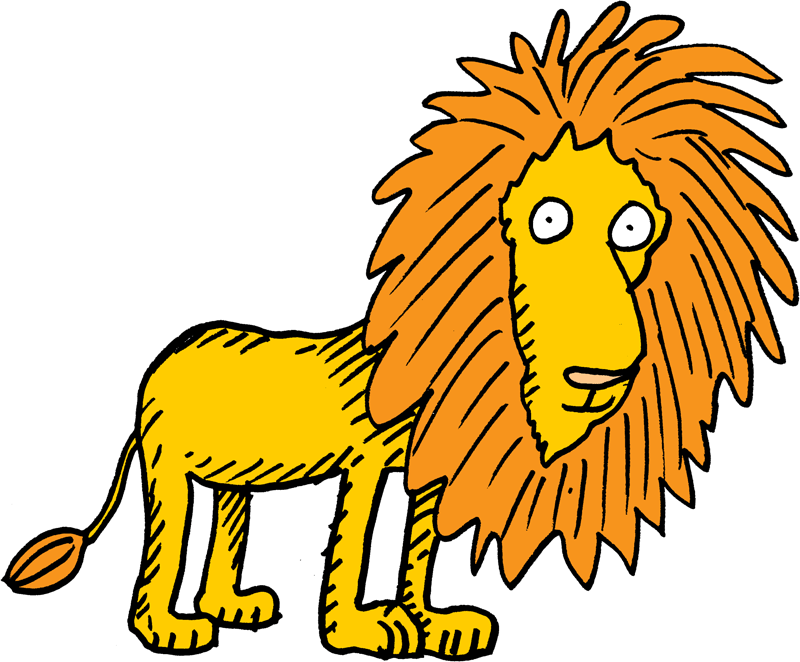
Trenches where lions and other wild
animals were kept, in the amphitheatre.
< Sardinia
7. Su Nuraxi
A ruined city and a miniature island
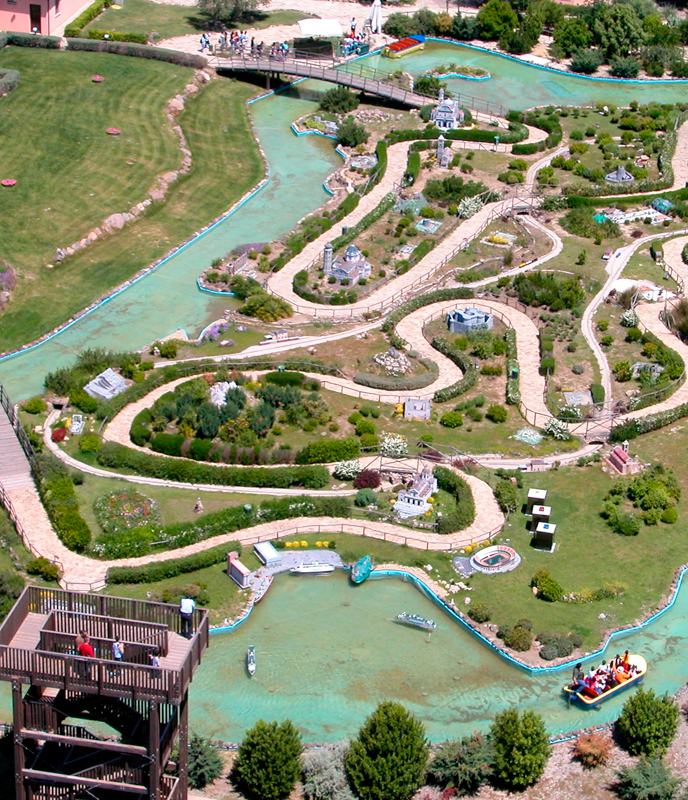
See all the best sights of Sardinia in miniature at
Sardegna in Miniatura
Around 60 km (37 miles) north of Cagliari, outside the village
of Barumini, lies Sardinia’s greatest Nuraghic monument, Su Nuraxi, built between 1500 and 1300 BC, with additions right up to
Roman times. It is dominated by a basalt central tower, with corridors leading
to smaller towers, surrounded by dozens of prehistoric stone huts.
In Barumini itself, the remains of another Nuraghic complex lie
inside the 17th-century palace of Casa Zapata. Also
on display here are farming tools and launeddas, or Sardinian “triple
pipes” – the island’s traditional instrument.
A third attraction lies 1 km (half a mile) west of Barumini,
towards Tuili: Sardegna in Miniatura, a miniature
Sardinia showing all its most famous sights, including Su Nuraxi itself. The
scale-model can be toured by boat and viewed from a tower.
Kids’ Corner
Do you know?
1. What kind of stone Su Nuraxi is made from?
2. The name of a traditional Sardinian musical
instrument?
Frolicking foals
The wild ponies of the Giara di Gesturi are
thought to have been introduced by the Phoenicians 3,000 years ago.
< Sardinia
8. Villasimius
Seaside and shipwrecks
Southern Sardinia’s pre-eminent family resort, on the island’s
southeast corner, is a place to unwind. Surrounded by silky sands, the place
bursts with energy in summer and is dead in winter, but has enough beaches, bars
and restaurants for any season. Bikes and scooters can be rented to explore the
lagoons and Spanish watchtowers scattered along the coast, and local outfits
rent diving equipment to nose around the seabed. For landlubbers, the town’s
engaging Museo Archeologico displays local
Carthaginian and Roman finds and items from a 16th-century Spanish shipwreck.
Kids’ Corner
Look out for…

Weapons from a 16th-century Spanish shipwreck,
in the museum at Villasimius.
< Sardinia
9. Sant’Antioco and San Pietro
Burial sites and secret beaches

Fishing boats tied up in the harbour at Calasetta,
Sant’Antioco island
Until they were dislodged by the Romans, the Carthaginians
controlled Sardinia’s southwestern corner from their base on the isle of Sant’Antioco, which they named Sulki. Today, the
island is connected to the rest of Sardinia by a slender isthmus. A panoramic
promontory at one end of Sant’Antioco is the location of a Carthaginian tophet, or burial site, dedicated to the gods
Baal-Hammon and Tanit. Ancient pottery, jewellery and colourful mosaics are
collected in the Museo Archeologico here. From
Calasetta, at the north of the island, ferries cross to smaller San Pietro. Apart from the elegant town of
Carloforte, it is a rugged spot, with a few scraps of beach and fantastic views
from Capo Sandalo on its western tip.
Kids’ Corner
Do you know?
The Carthaginian name for Sant’Antioco?
Look out for…
Urns that once held human and animal ashes, at
Sant’Antioco’s tophet site.
A mosaic of drinking panthers, in
Sant’Antioco’s archaeological museum.
< Sardinia
10. Sinis Peninsula
Underwater ruins
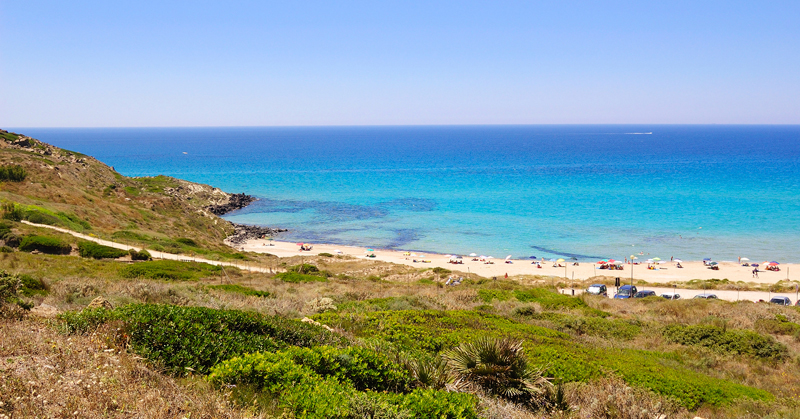
The beach at San Giovanni di Sinis on the Sinis
Peninsula
Halfway up Sardinia’s west coast, the Sinis Peninsula is an
area of lagoons and beaches. At its south is Tharros,
founded by the Phoenicians in the 8th century BC and later settled by
Carthaginians and Romans – much of it now underwater. Its stones were used to
build the 5th-century church of San Giovanni di Sinis nearby.
Kids’ Corner
Do you know?
-

Why barefoot boys run across the Sinis
Peninsula in early September?
-

Boy racers
The Corsa degli Scalzi, or “barefoot race”
re-enacts a mission undertaken five centuries ago, in 1506, to save
the statue of San Salvatore from barbarian raiders. Barefoot boys
clad only in white shirts and shorts set off at dawn from Cabras on
the Sinis Peninsula and run to San Salvatore di Sinis, 8 km (5
miles) away. They return the next day, bearing the holy statue to
safe custody in Cabras.
Look out for…
The Spanish watchtower overlooking the site of
Tharros.





 Which is the biggest fish in the Aquarium?
Which is the biggest fish in the Aquarium?










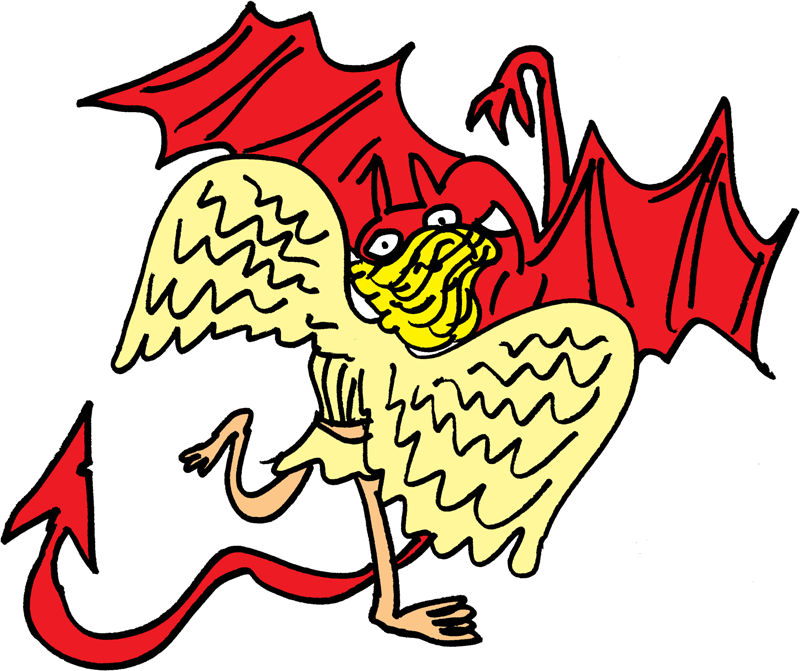
 Trenches where lions and other wild animals were kept, in the amphitheatre.
Trenches where lions and other wild animals were kept, in the amphitheatre.






